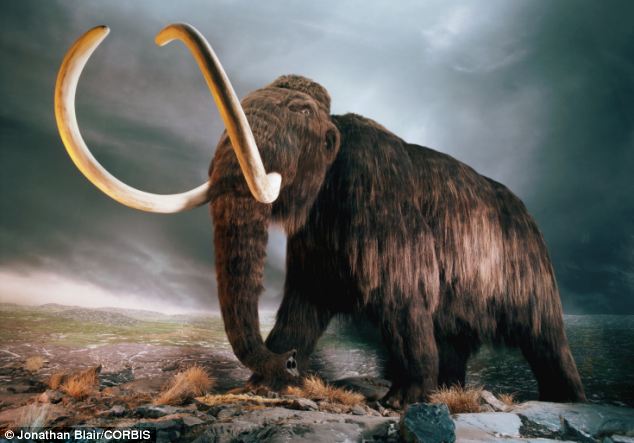Some species managed to adapt but the woolly mammoth died out
A giant meteor was probably responsible for wiping out the woolly mammoth, scientists believe.
It has long been thought that hunting was the cause of the creatures' extinction, but researchers have now revised their opinion.
They believe a huge meteor smashing through the Earth's atmosphere broke up into ten million tonnes of fiery fragments, scattering over four continents.
These fragments are thought to have released toxic gas which poisoned the air and blacked out the sun, causing temperatures to plummet, plants to die and landscapes to alter forever.

Research published in the Proceedings of the National Academy of Sciences suggests that this caused the extinction, countering previous theories that the spread of human settlements and aggressive hunting was to blame.
After the impact, some animal species, like humans, adapted by either moving away, downsizing to adapt to the resources around them, or simply changed their way of life to cope.
But other species, including the woolly mammoth which roamed throughout Europe, parts of Asia and North America in vast numbers, did not adapt and were wiped out in a generation.
The research says the impact changed the course of the Earth's history forever.
According to anthropologist and geology professor Kenneth Tankersley, the change from booming population to total extinction happened 'within a lifetime'.
The University of Cincinnati professor said: 'Imagine living in a time when you look outside and there are elephants walking around Cincinnati.
'But by the time you are at the end of your years there are no more elephants. It happens within your lifetime.'
Working with scientists all over the world, the team found evidence of burnt out fragments of carbon - called spherules - in sites on four continents, and all dating back 12,800 years.

They examined the bedrock dating back to the ice age in 20 archaeological sites in the world which date back to this formative period in the Earth's history.
The timing matches the known dates of the last woolly mammoths to roam the planet, along with other ice age creatures like the sabre tooth tiger.
A meteorite hitting the Earth's surface or simply breaking up as it passed through the atmosphere, would cause a sudden and drastic change in the weather.
Professor Tankersley said: 'This likely cause climate change and climate change forced this scenario. You can move, downsize or you can go extinct.
'Humans at the time were just as resourceful and intelligent as we are today. With mammoth off the dinner table, humans were forced to adapt which they did to great success.'
He added that the lessons learned from that time could apply to today as the Earth again goes through a period of 'rapid and profound' climate change.
He said: 'It's a reminder of how fragile we are. Imagine an explosion that happened today that went across four continents.
'The human species would go on. But it would be different. It would be a game changer.'



Reader Comments
to our Newsletter